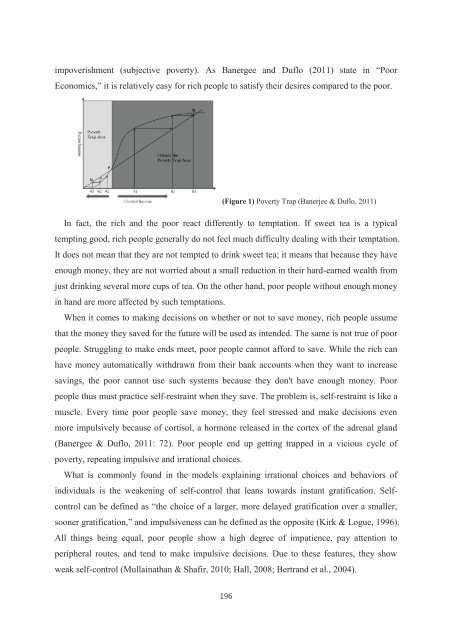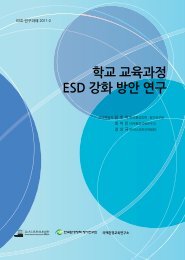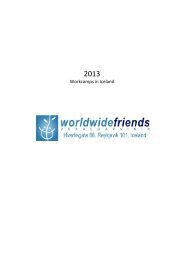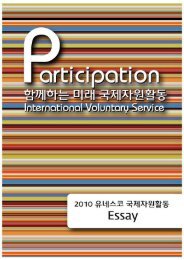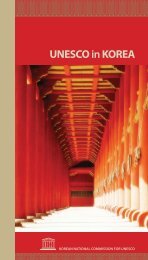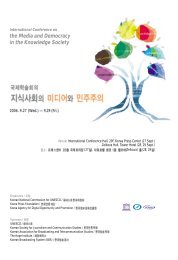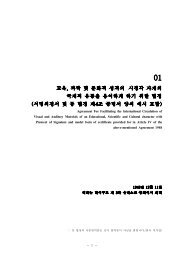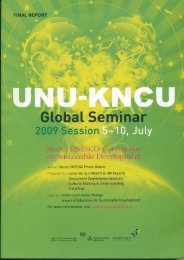íëìë³´ë2012문íì ë°ì ë¼ì´ëí ì´ë¸.pdf - ì ë¤ì¤ì½íêµììí
íëìë³´ë2012문íì ë°ì ë¼ì´ëí ì´ë¸.pdf - ì ë¤ì¤ì½íêµììí
íëìë³´ë2012문íì ë°ì ë¼ì´ëí ì´ë¸.pdf - ì ë¤ì¤ì½íêµììí
Create successful ePaper yourself
Turn your PDF publications into a flip-book with our unique Google optimized e-Paper software.
impoverishment (subjective poverty). As Banergee and Duflo (2011) state in “Poor<br />
Economics,” it is relatively easy for rich people to satisfy their desires compared to the poor.<br />
(Figure 1) Poverty Trap (Banerjee & Duflo, 2011)<br />
In fact, the rich and the poor react differently to temptation. If sweet tea is a typical<br />
tempting good, rich people generally do not feel much difficulty dealing with their temptation.<br />
It does not mean that they are not tempted to drink sweet tea; it means that because they have<br />
enough money, they are not worried about a small reduction in their hard-earned wealth from<br />
just drinking several more cups of tea. On the other hand, poor people without enough money<br />
in hand are more affected by such temptations.<br />
When it comes to making decisions on whether or not to save money, rich people assume<br />
that the money they saved for the future will be used as intended. The same is not true of poor<br />
people. Struggling to make ends meet, poor people cannot afford to save. While the rich can<br />
have money automatically withdrawn from their bank accounts when they want to increase<br />
savings, the poor cannot use such systems because they don't have enough money. Poor<br />
people thus must practice self-restraint when they save. The problem is, self-restraint is like a<br />
muscle. Every time poor people save money, they feel stressed and make decisions even<br />
more impulsively because of cortisol, a hormone released in the cortex of the adrenal gland<br />
(Banergee & Duflo, 2011: 72). Poor people end up getting trapped in a vicious cycle of<br />
poverty, repeating impulsive and irrational choices.<br />
What is commonly found in the models explaining irrational choices and behaviors of<br />
individuals is the weakening of self-control that leans towards instant gratification. Selfcontrol<br />
can be defined as “the choice of a larger, more delayed gratification over a smaller,<br />
sooner gratification,” and impulsiveness can be defined as the opposite (Kirk & Logue, 1996).<br />
All things being equal, poor people show a high degree of impatience, pay attention to<br />
peripheral routes, and tend to make impulsive decisions. Due to these features, they show<br />
weak self-control (Mullainathan & Shafir, 2010; Hall, 2008; Bertrand et al., 2004).


